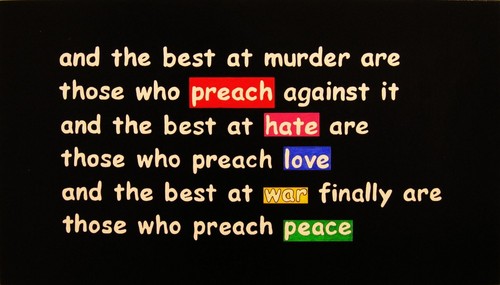Ever since the hard boiled fiction of Raymond Chandler and James M. Cain was brought to the big screen, talk of film noir became something eternal. Thanks to notable noir scholars Alain Silver and James Ursini along with Elizabeth Ward and Robert Porfirio, we can look back at everything from “the stuff dreams are made of” to the “rules of fight club” all in one place.

Noir film has been around for a long time and last year I wrote a piece detailing my desire for a full on film noir revival. By paging through Film Noir: The Encyclopedia we can see that the genre has never gone away, but only moved in and out of mainstream popularity. Now is a great time to bring back what we’ve long loved about noir cinema, as I stated in my revival piece:
“Today’s cultural climate, with the economic downturn, soaring unemployment, and the looming threat of terrorism warrants a new desire for noir film. It provides a perfect catalyst for a stylistically cynical and dark film movement. Turbulent times often result in artistic genius, just look at German Expressionism.”
It was my hope that Hollywood would begin to reach deep into its stylistic vault and bring back to the mainstream the kind of dark yet consistently satisfying films that Billy Wilder and John Huston made over half a century ago. Giving us much more than an encyclopedia, this book provides substantial essays on some of the most important films of the genre without ignoring some of the little known projects as well.
Full of production information as well as an abundance of photos and rare movie posters, this book shows us how many great (and not so great) noir films have been produced since the 1940’s. Everything from the famous A-grade productions like Sunset Boulevard to the lesser known B films like Nightmare Alley is covered in this text. As the genre progressed, we see how its tropes became commonly utilized in a more contemporary setting by filmmakers such as the Coen brothers (Blood Simple) and Brian De Palma (Body Double).
 “Nightmare Alley”
“Nightmare Alley”
The book introduces the noir genre as such:
“Film noir is literally ‘black film,’ not just in the sense of being full of physically dark images, nor of reflecting a dark mood in American society, but equally almost empirically as a black slate on which the culture could inscribe its ills and in the process produce a catharsis to help relieve them.”
This is precisely why now is a perfect time for filmmakers to take advantage of what the genre has brought us. Anyone looking at getting into filmmaking as well as the academic side of film would benefit from this important collection of essays.
Broken into two major sections, classic noir and neo noir, each is complete with a useful introduction as well as subsections that help break down the genre in terms of context and time period. The classic section discusses the importance of German Expressionism, the introduction of the “fatal male” character, as well as an excellent shot breakdown from Where Danger Lives that sheds light on the stylistic use of lighting and camera placement that influenced later generations of filmmakers.

The neo-noir portion highlights the growth of the genre and how it expanded after 1960. Co-author James Ursini says that “if film noir is no longer the American style, certainly no other has emerged to replace it.” Noir has continuously made its way into a wider mainstream audience with films like Blade Runner, The Silence of the Lambs as well as Collateral and Sin City. It is clearly still a powerful American style, and seeing the massive amount of films in this collection piques my enthusiasm for more noir films in the future.
While there is no shortage of material on film noir, never before has there been so much of it in one place. Film Noir: The Encyclopedia is a must have for any fan of the genre since it works as an in-depth version of the Internet Movie Database. Raymond Chandler once wrote that “the streets are dark with something more than night,” this book is the most expansive and comprehensive exploration of what looms in that darkness.
COMMENTS
Please let us know if you're having issues with commenting.